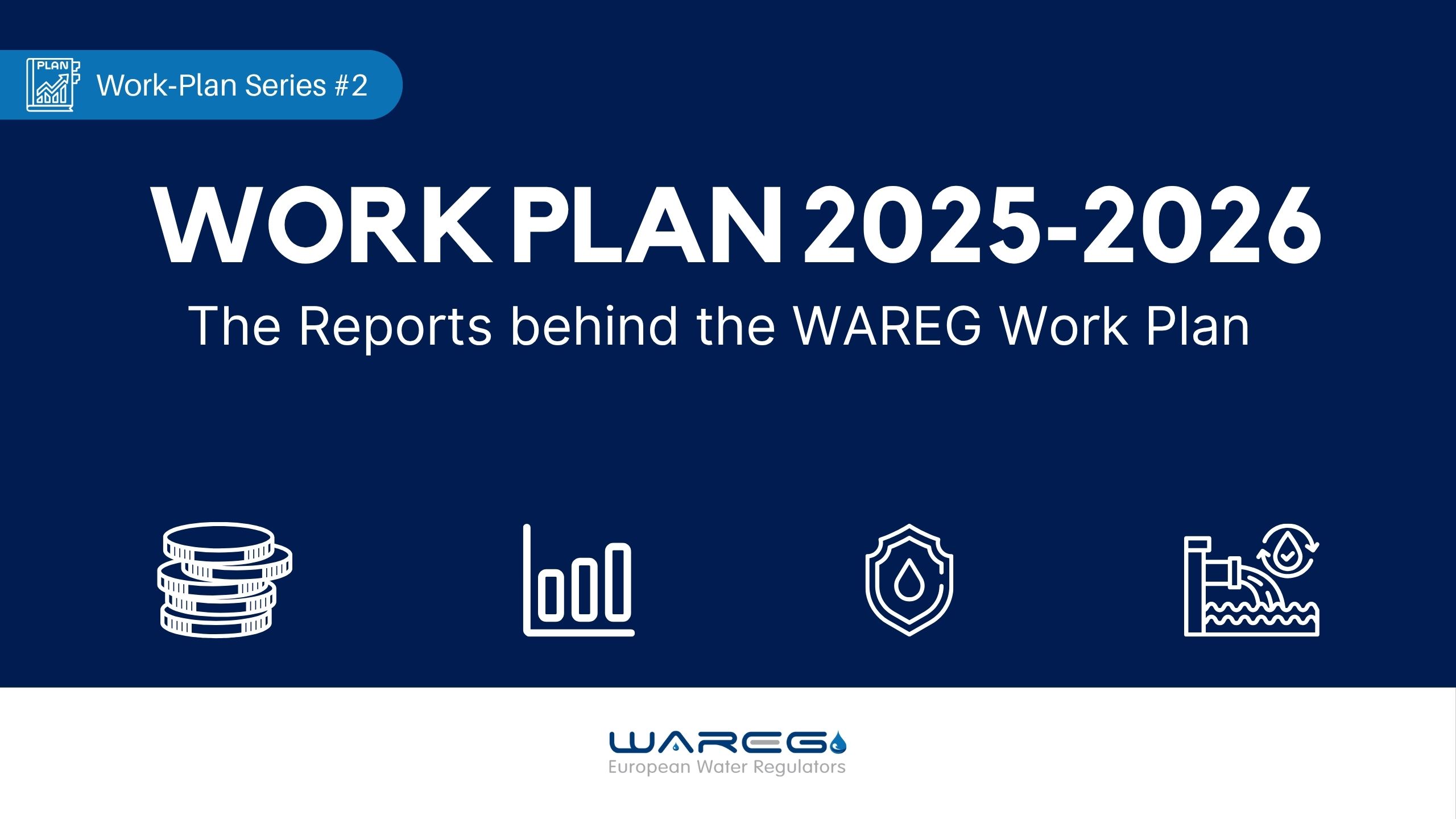
When WAREG’s 34ᵗʰ General Assembly endorsed the new Work Plan, members agreed that the four Working Groups—Tariffs, KPIs, Drinking Water Directive (DWD) and Urban Wastewater Treatment Directive (UWWTD)—should build on the most complete evidence already available. Two earlier studies supply much of that groundwork: Tariff Regulatory Frameworks in WAREG Member Countries (2019) and Key Performance Indicators Frameworks (2023). Below is a look at what those reports contain, why they matter, and how the new Working Groups will extend or complement them.
Revisiting Tariff Structures
The 2019 tariff study compiled data on cost‑recovery formulas, indexation methods, and social‑protection schemes from more than twenty jurisdictions. Although the market context has evolved—energy prices, inflation and new affordability measures have altered tariff pressures—the underlying typologies remain a useful reference point.
The Tariffs Working Group will therefore update the original survey, add variables that capture recent economic shocks, and analyse whether methodological shifts (for example, greater use of performance‑linked adjustments) have taken hold. A consolidated dataset is expected to inform price‑review cycles across the network. Interim analyses will be presented to members in mid‑2025; a full publication is slated for the first half of 2026.
From Hundreds of Indicators to a Common Scorecard
The 2023 KPI report catalogued 425 performance indicators used by WAREG authorities. One clear observation was that identical names often mask different formulas, making cross‑country comparison difficult. The KPI Working Group’s assignment is to refine that list into a manageable suite of core indicators, each with an agreed definition, data source and reliability scale.
A draft methodology pack will circulate in 2025 for member testing. Feedback will shape a pilot online dashboard, and an internal WAREG scorecard is planned for release in 2026. The expectation is that a smaller, harmonised indicator set can support benchmarking exercises, tariff reviews and future EU reporting requirements.
Directive‑Centred Groups and Their Evidence Base
While the Tariffs and KPIs WGs can draw directly on legacy WAREG reports, the DWD and UWWTD groups start from a different foundation: recent EU legislation and the associated impact‑assessment material. That does not mean the earlier WAREG studies are irrelevant. Cost data from the tariff report inform financial scenarios for new wastewater obligations, and definitions under development in the KPI group are likely to support monitoring of leakage targets and risk‑management plans under the revised DWD.
To fill remaining information gaps, both directive‑centred groups will collect fresh evidence. The DWD WG is preparing a structured survey on transposition status, risk‑assessment practice and consumer‑information tools. The UWWTD WG is commissioning analysis of Extended Producer Responsibility (EPR) models and quaternary‑treatment costs and will test cost‑allocation scenarios against the tariff structures identified in the 2019 study. Both WGs plan interim briefings in 2025 and more detailed guidance in 2026.
Looking Ahead
Deliverables scheduled between now and 2026 include an updated tariff report, a common KPI toolkit, a DWD implementation review and UWWTD financing guidance. Each publication will undergo internal consultation and the first draft results and reports will be presented at General Assemblies and the European Forum on the Regulation of Water Services (#EFRWS25) on December 4th in Brussels.